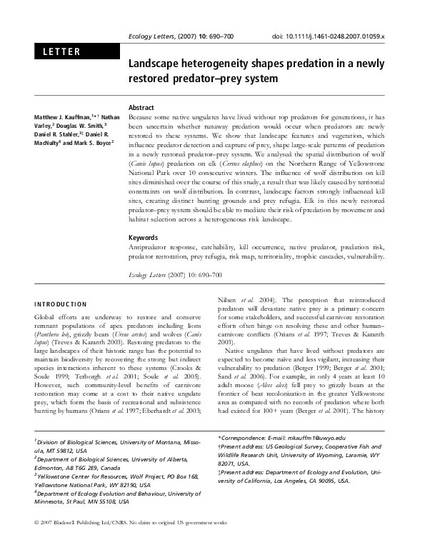
Article
Landscape heterogeneity shapes predation in a newly restored predator-prey system
Ecology Letters
(2007)
Abstract
Because some native ungulates have lived without top predators for generations, it has been uncertain whether runaway predation would occur when predators are newly restored to these systems. We show that landscape features and vegetation, which influence predator detection and capture of prey, shape large-scale patterns of predation in a newly restored predator–prey system. We analysed the spatial distribution of wolf (Canis lupus) predation on elk (Cervus elaphus) on the Northern Range of Yellowstone National Park over 10 consecutive winters. The influence of wolf distribution on kill sites diminished over the course of this study, a result that was likely caused by territorial constraints on wolf distribution. In contrast, landscape factors strongly influenced kill sites, creating distinct hunting grounds and prey refugia. Elk in this newly restored predator–prey system should be able to mediate their risk of predation by movement and habitat selection across a heterogeneous risk landscape.
Keywords
- landscape,
- heterogeneity,
- predation,
- restored predator
Disciplines
Publication Date
2007
DOI
https://doi.org/10.1111/j.1461-0248.2007.01059.x
Citation Information
Kauffman, M.J., N. Varley. D.W. Smith, D. Stahler, D.R. MacNulty, and M.S. Boyce
(2007) Landscape heterogeneity shapes predation in a newly restored predator-prey system. Ecology Letters 10:690-700.
